Foreword
The moon-world of Aereth is rife with predators of all kinds. It has parallels to all of Earth’s modern predators but, in addition, the great prehistoric megafauna has not gone extinct. There is even one relic dinosaur (arswydus, a raptor-type dinosaur). Aereth also has manticores, gryphons, hippogriffs, and basilisks. These will be detailed in this document later.
Arswydus
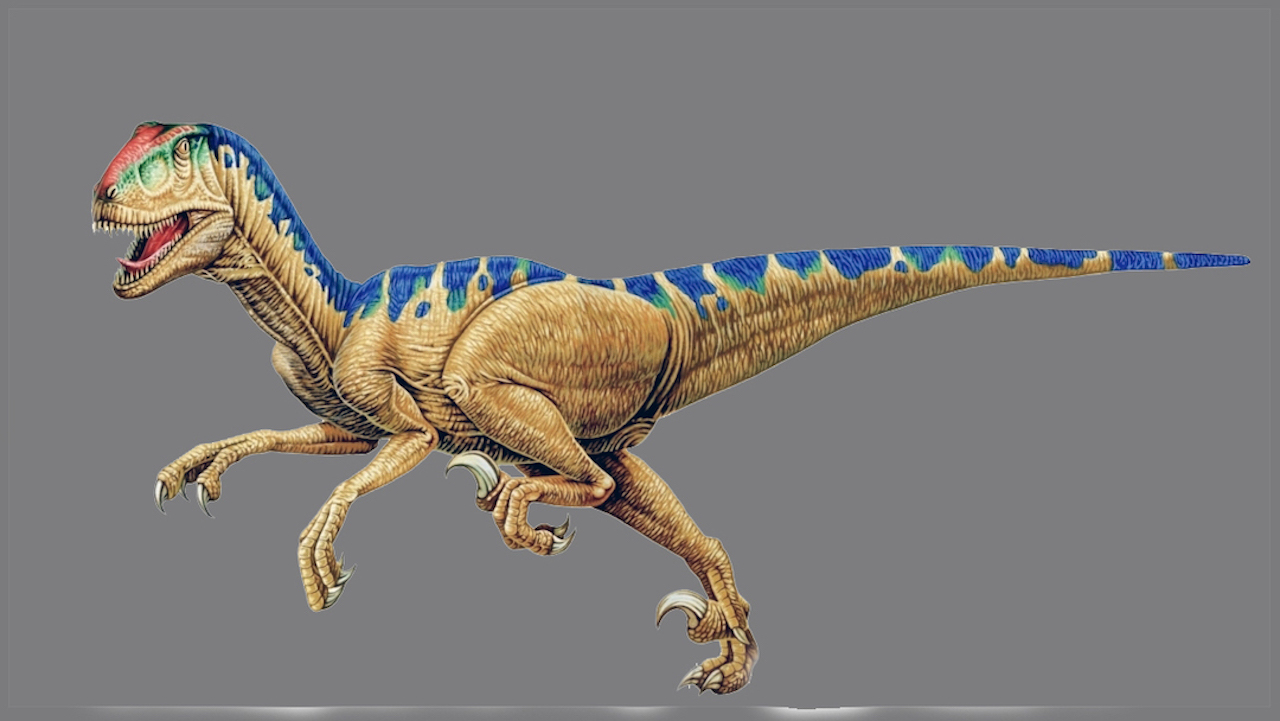 Arswydus
Arswydus
(p. r-swee-dus) Literally translated arswydus means horrific, shocking, terrible, appalling, horrifying or fearful. This appears to have been the best description the people of Aereth could come up with for this creature.
Arswydus are the only surviving species of dinosaur. It is believed that they are descendants of avian dragons that used to roam the lands of Aereth.
Arswydus can reach 11.2 feet in length, with a skull length 16.1 inches, a hip height of 2.9 feet and a weight of 161 pounds. The skull is equipped with powerful jaws lined with around seventy curved, blade-like teeth. Both the skull and the lower jaw have fenestrae (skull openings) which reduce the weight of the skull. In Arswydus, the antorbital fenestra, a skull opening between the eye and nostril, is particularly large.
Arswydus possess large hands (manus) with three claws on each forelimb. The first digit was shortest and the second was longest. Each hind foot bore a sickle-shaped claw on the second digit, which is used during predation.
The animals are smooth scaled with unusually brightly colored markings along the back of the head, along the spine and down to the tip of the tail. Their undersides and legs are generally tan or tannish gray in color.
Full grown Arswydus are quite fast, able to keep up with a galloping horse or herds of deer. They are carnivorous and hunt in packs of three to five animals usually led by an alpha mated pair with the larger female being the dominant animal.
Arswydus prefers tropical or subtropical forests, deltas, and lagoons. While rare, Arswydus have been seen on plains although not far from their preferred forest habitats.
Barsk
A barsk is an odd, almost alien looking animal, native to the lands of Cailleach on the moon-world of Aereth. It has the reputation of being bold, fearless, and intelligent as well as cunning, and very dangerous. It is a canid, possibly an offshoot of one of the branches of wolves. Barsks are rarely sighted as they live in the highest reaches of the great mountains. In the distant past, barsks roamed lowland forests and plains, but they have been hunted so fiercely due to fear and the lure of their fantastic manes and hides, that they eventually disappeared. It was thought they were extinct until one was sighted in the highlands of A’elnore.
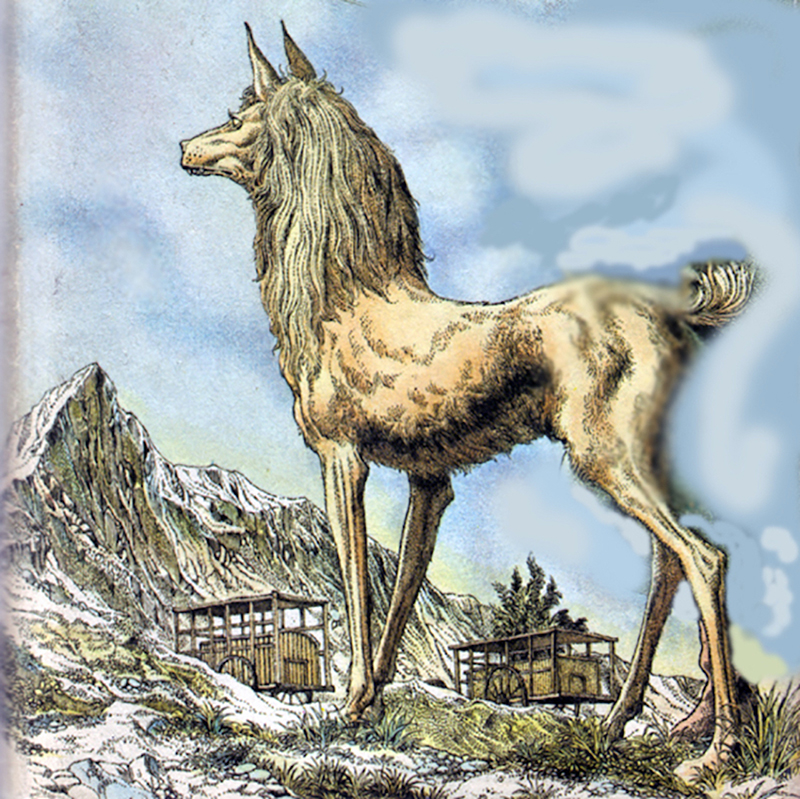 Barsks are large animals. The males usually average in height between three and a half to four feet at the withers (nape of neck), females are only slightly smaller. When measured from the top of the head to the ground, due to the way their head and neck are carried, they can measure up to five feet tall. The body seems rather small in comparison to the length of its legs which are long and rather thin, designed for speed and agility. The legs end in almost cat-like paws. Each arched paw sports three deadly claws. The tail is a short tuft and furred. The muzzle is not overlong and widens to a head that is almost perfectly wedge shaped. Eyes, set aslant beneath a slight brow ridge are usually blue in color, but some barsks have amber- or topaz-colored eyes. The head widens out at the brow to allow for the wide-set, upswept ears and the narrow muzzle carries large, curved teeth and fangs. Barsks have a bite that would rival that of the biggest Dire Wolves known. While the barsk is a very tall animal, it is not overly massive in weight, built instead for speed and endurance.
Barsks are large animals. The males usually average in height between three and a half to four feet at the withers (nape of neck), females are only slightly smaller. When measured from the top of the head to the ground, due to the way their head and neck are carried, they can measure up to five feet tall. The body seems rather small in comparison to the length of its legs which are long and rather thin, designed for speed and agility. The legs end in almost cat-like paws. Each arched paw sports three deadly claws. The tail is a short tuft and furred. The muzzle is not overlong and widens to a head that is almost perfectly wedge shaped. Eyes, set aslant beneath a slight brow ridge are usually blue in color, but some barsks have amber- or topaz-colored eyes. The head widens out at the brow to allow for the wide-set, upswept ears and the narrow muzzle carries large, curved teeth and fangs. Barsks have a bite that would rival that of the biggest Dire Wolves known. While the barsk is a very tall animal, it is not overly massive in weight, built instead for speed and endurance.
The coats of the barsk are spectacular and are highly prized in some parts of Aereth. The barsk’s head is covered by short, sleek fur that matches the base of color of their mane. The mane itself, formerly cherished as short tunics and jackets, is thick, silken and luxurious. It is usually a base color that ripples with the lighter colors of the animal’s coat. The mane starts at the back of the head and flows to the animal’s shoulders and down the front of its chest. The body and legs are covered in a shorter, very dense fur and usually patterned in subtle stripes. The tails have a long silken fur that matches the animal’s mane. Barsk’s body fur is striped in a dark and light pattern that breaks up the animal’s outline. Each stripe pattern is unique. From spring to fall there is a wide range of colors in a barsk’s coat including black and grey, dark and light brown, tan and cream and the most prized of all, deep red gold with lighter golden stripes. By winter, barsks will have shed their colorful coats and replaced them with thicker winter colors of white and gray, the colors of the rocks and stones in the highest mountain reaches.
Barsks are agile animals and fierce, cunning hunters, easily able to take down the massive Highland Elk, wild boar, even bison. Their most common prey, however, are the Suri and mountain sheep. Their odd shaped paws provide balance and a phenomenal grip on the dangerous cliffs and ledges of their mountain territories. Once they have gotten a grip on their prey with their muzzle, they can also use the front claws to grip and the back ones to disembowel the animal. Barsks have been known to even take down the Daeodon and Kelenken.
It is believed that barsks are solitary animals, although, once they have taken a mate, they are paired for life. If one of a mated pair dies or is killed, the remaining barsk will mate again. Litters tend to be small, rarely more than four cubs born at a time, more often there are only two.
Most of the nations in A’elnore have outlawed hunting barsks for their fur, only allowing them to be killed if they become a nuisance or dangerous to livestock and people.
Daeodon
Entelodonts are a group of pig-like omnivorous mammals with bulky bodies, but short, slender legs and long muzzles. The largest species on Aereth are the Daeodon which inhabit the forests and plains. Some specimens have been known to reach nearly seven feet tall at the shoulder and weigh nearly a thousand pounds with a skull measuring over three feet in length. Although they have brains approximately the size of an orange, they are fierce and viciously cunning predators as well as opportunistic hunters and scavengers.

Daeodons have a full set of teeth, including large canines, heavy incisors and relatively simple, but powerful molars. While the canines are oversized, they lack the protruding tusks of wild boar. Like other animals in the pig family, they have cloven hooves with two toes touching the ground and the remaining two being vestigial.
The most distinguishing characteristic of the Daeodon is the heavy, bony lumps on either side of the head, like warthogs. These are attachment points for the massively powerful jaw muscles. The bony protrusions tend to be larger in males and may play a role in competition for mates.
Daeodons can be found in the forests and plains all over Aereth. They are one of the apex predators, consuming carrion, and live animals, rounding off their diets with plants and tubers. Although technically omnivores, the Daeodon show a preference towards live prey and carrion. Like some bears, Daedon have been known to cache their kills to consume later.
Like wild boar, Daeodons tend to be aggressive and oblivious of the odds against it. They do not hesitate to attack mounted riders. There is no distinguishable difference between the aggressive behaviors of males versus females although females are known to be even more dangerous when protecting their young.
Direwolf
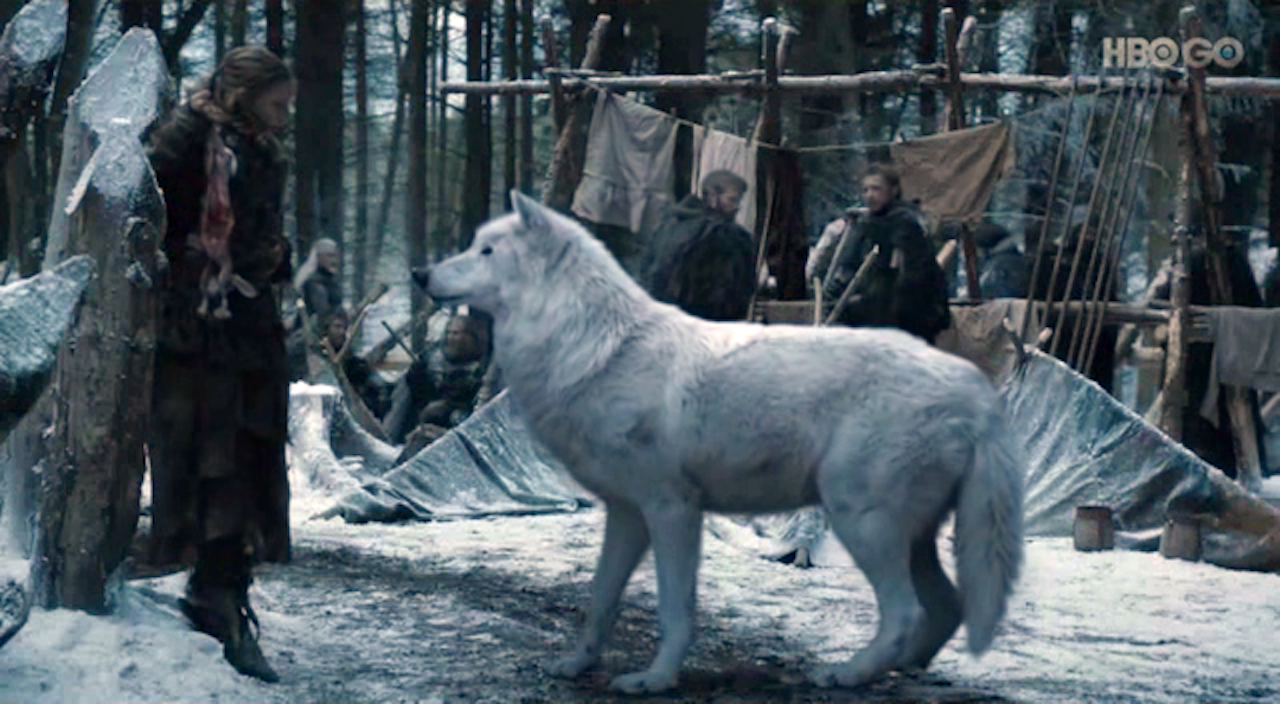
Direwolf
Of the common wolf species on Aereth, the largest is the direwolf. Unlike common wolves, the direwolves thrive as solitary individuals as well as in small family packs. They are monogamous for the lifespan of their mate. In very rare circumstances, Dire Wolves will mate with common wolves.
The direwolf averages 4.25 feet at the shoulder, approximately 7 feet in length, and can weigh up to 165 pounds making them approximately half again as large as the common wolves of Aereth. The other physical attribute that distinguishes a Dire from the common is wolf is a double set of upper and lower canines. Both fangs curve slightly backward with the leading fang being slightly longer than the secondaries.
Direwolves' overpowering bite can hold and subdue prey considerably larger than themselves. Traveling in large packs, the wolves feed on a variety of larger mammals and the megafauna.
Sabercats
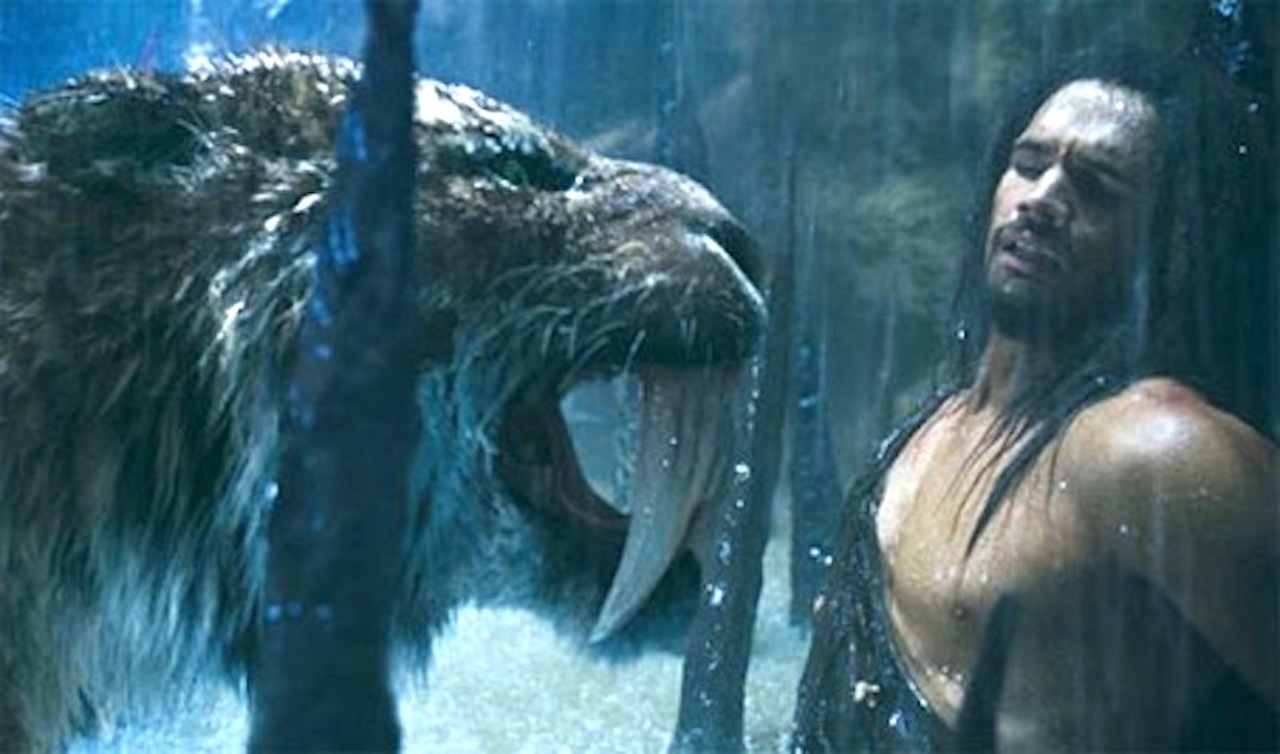 Sabercat
Sabercat
Amongst the various large predatory cats in Aereth, the Sabercats are by far the most impressive. It is more robustly built than any of the other plains, forest or mountain dwelling large cats, with particularly well-developed forelimbs and exceptionally long upper canines. Its jaw has a bigger gape than other cats and its upper canines are slender and fragile, being adapted for precision killing. Sabercats specialize in hunting the large bison, elk, and sometimes the mountain sheep.
The Sabercat has a body mass range 490 to 880 lbs. and stands up to 4 feet tall at the shoulder. It competes with both the Dire Wolf and Short-Faced Bear for prey.
Sabercats’ coloring is distinct to its region, although the coats are all thick and tend to be spotted or striped. The tawny, striped animals tend to be native to the plains and grasslands and some lowland forests. Darker striped and spotted coats are indigenous to larger, deeper forests. In the highest mountains, the Sabercats tend to sport luxurious light gray to almost white base coats with cloudy dark markings, usually spots.
Short-Faced Bear
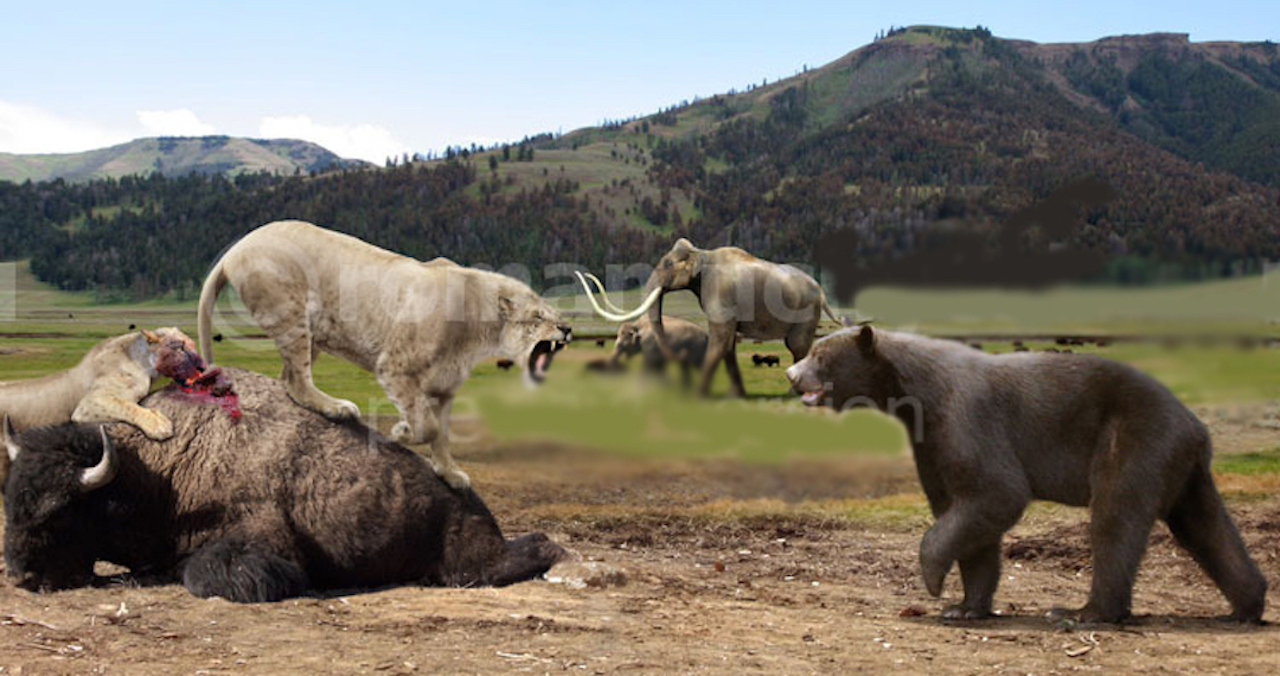 Short-Faced Bear vs. Cave Lion
Short-Faced Bear vs. Cave Lion
Possibly the largest carnivorous land mammal that has ever lived on Aereth, the Short-Faced bear is a fierce predator. Unlike its smaller cousins, it prefers meat although it will scavenge or hunt for berries when prey is not available.
The average weight of a full grown male is approximately 2,000 lbs. Some can reach as high as 15 feet when standing on their hind legs.
Cloaks and blankets made from the beast's thick fur are highly prized.
Kelenkens
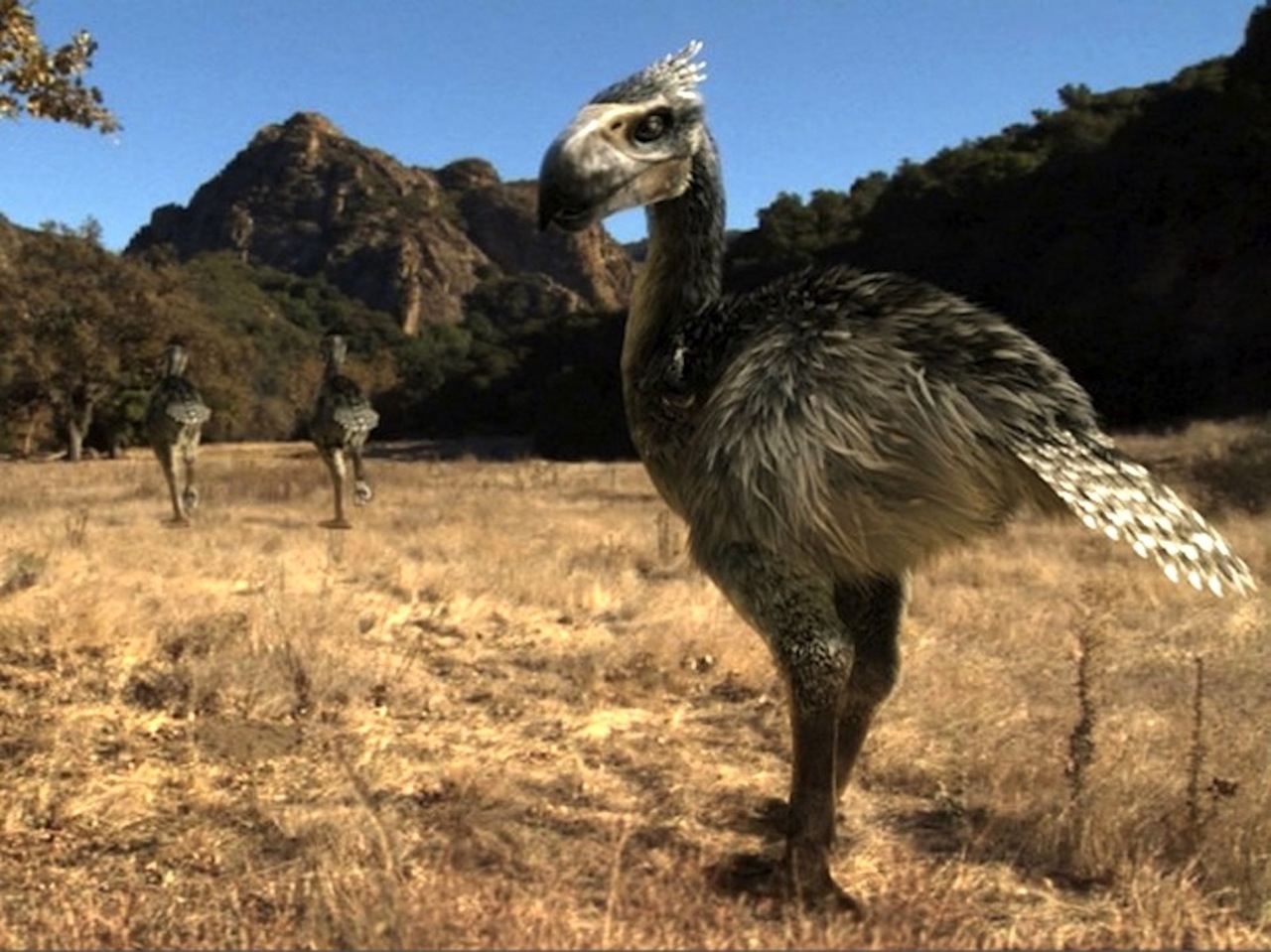 Plains Kelenken
Plains Kelenken
Kelenkens, commonly referred to as Kels or terror birds, are massive, flightless birds. It is omnivorous, although it prefers meat. There is nothing that frightens a full-grown Kelenken except, perhaps, another full-grown Kelenken. There are several species of Kels that range in size and weight. All are extremely dangerous.
Kelenkens wield its large, heavy, pointed beak like a hatchet, repeatedly closing in on prey, inflicting deep wounds with quick stabbing motions, then withdrawing to a safe distance as its unfortunate victim bleeds to death. It does not care if its prey is completely dead when it starts eating. Kelenkens roam the plains and forests. Rarely, when prey is scarce, they will come into inhabited areas.
There are other flightless birds, some large, but none as imposing or potentially dangerous as the Kelenken.